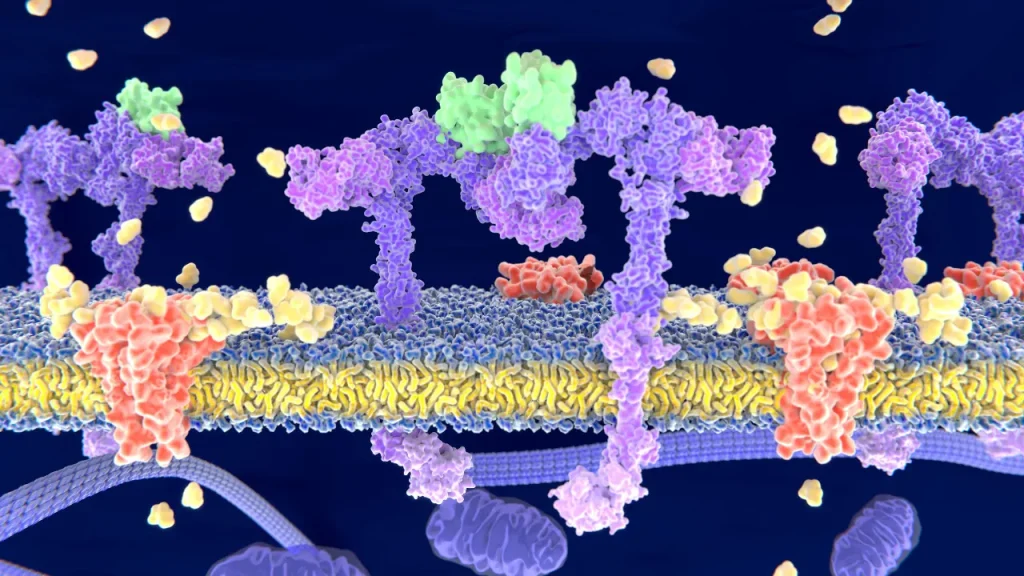The natural health supplement, Copaiba Balsam, is made from the Copaifera tree. This tree is one that may be found in South and Central Americas and has grown in popularity. This article examines the nature of Copaiba Balsam, its health advantages, ideal dose, probable side effects, drug interactions, and responsible applications. Copaiba Balsam has a long history of traditional use, and there is growing scientific interest in it. The article shall also examine the Copaiba Balsam’s chemical make-up and its physiological methods of action on the body and brain.
You May Also Like:
The Best Mushroom Supplements for Memory: 5 Top Brands Reviewed
Finding the Best Supplements for Brain Fog After COVID: 5 Top Brands Reviewed
Copaiba Balsam: Benefits, Dosage, Side Effects, Drug Interactions, and Other Important Information is an original (NootropicsPlanet) article.
Nature of Copaiba Balsam
Copaiba Balsam is derived from Copaifera trees, particularly Copaifera langsdorffii and Copaifera officinalis. The trees from which it is derived are indigenous to the Amazon jungle and yield a translucent, yellowish resin that is harvested ethically. Copaiba Balsam is produced by processing the resin and is frequently sold as an essential oil or in capsule form.
Health Benefits of Copaiba Balsam
- Copaiba Balsam has anti-inflammatory properties, which are due to the activation of CB2 receptors. Due to this characteristic, it may be helpful in treating diseases including inflammatory bowel disease, arthritis, and skin irritation.
- Analgesic Effects: Copaiba Balsam has long been used to treat pain. The activation of CB2 receptors, which have the capacity to reduce pain signals, may be the cause of its capacity to modify the experience of pain.
- Wound Healing: Copaiba Balsam has the ability to heal wounds. Its antibacterial properties work along with anti-inflammatory properties to speed up healing and lower the chance of infection.
- Skin Health: By decreasing inflammation, accelerating wound healing, and treating skin disorders including acne, eczema, and psoriasis, topical use of Copaiba Balsam may help to enhance skin health.

Chemical Composition of Copaiba Balsam
Copaiba Balsam has a complicated chemical makeup and contains a number of bioactive substances. Sesquiterpenes, diterpenes, and triterpenes are some of the main components. The main sesquiterpene responsible for Copaiba Balsam’s distinctive scent and medicinal effects is beta-caryophyllene. Copaiba Balsam’s overall chemical composition is also influenced by other sesquiterpenes such alpha-copaene, beta-bisabolene, and alpha-humulene. Copaiba Balsam also contains diterpenes such as copalic and kaurenoic acids.
Physiological Mechanism of Action
Copaiba Balsam exerts its beneficial effects on the body through various physiological mechanisms. One of the key mechanisms is the interaction of Copaiba Balsam with the endocannabinoid system (ECS). Beta-caryophyllene, a prominent compound in Copaiba Balsam, acts as a selective agonist for cannabinoid receptor type 2 (CB2), which is primarily expressed in immune cells and peripheral tissues. Activation of CB2 receptors modulates inflammatory responses, providing potential anti-inflammatory benefits, such as those found within Copaiba Balsam.

Optimal Dosage
The best amount of Copaiba Balsam to take varies on a number of criteria, including how it is taken, how concentrated it is, and how each person reacts. It is for you crucial to follow product-specific instructions and get advice from a healthcare expert before usage because the concentration of essential oils might vary. To determine a person’s tolerance and reaction, start with a low dosage, monitor the effects, and progressively increase it if appropriate.
Side Effects
When used properly, Copaiba Balsam is usually regarded as safe. The moderate side effects that some people could have, nevertheless, include skin irritation, allergic reactions, or stomach discomfort. If any negative effects manifest, you are advised to stop using it and seek professional assistance. Although adverse effects are often moderate and uncommon, they are a possibility. To ensure ethical use, it is crucial that you be informed of these potential negative effects.
The following are a few of the negative effects of Copaiba Balsam:
Gastrointestinal Discomfort: After ingesting Copaiba Balsam, some people may develop moderate gastrointestinal symptoms as nausea, stomach cramps, or diarrhea. Usually transient, these symptoms disappear on their own. Stop using the medication and seek medical advice if you have severe or ongoing stomach pain.
Allergic responses: Copaiba Balsam can cause uncommon but probable allergic responses. Skin rash, itching, swelling, and respiratory symptoms including wheezing or breathing difficulties are only a few examples of symptoms. Stop taking Copaiba Balsam and get medical help right away if you have any symptoms of an allergic reaction.

Potential Substance Interactions
To reduce the danger of possible interactions, people with particular medical problems or those taking certain drugs should speak with their doctor before using Copaiba Balsam. Despite the fact that using Copaiba Balsam is usually regarded as safe, it is crucial to be informed of any possible drug interactions to ensure responsible and safe use.
The following items might interact with Copaiba Balsam:
Antiplatelet and anticoagulant medications: Use caution while using Copaiba Balsam with anticoagulant or antiplatelet drugs because it may have minor anticoagulant qualities. The possibility of bleeding or bruising might significantly rise if Copaiba Balsam is used with certain medications. If you are taking such drugs, it is imperative that you speak with a healthcare provider.
Immunosuppressive Drugs: Copaiba Balsam has immunomodulatory properties. Before using Copaiba Balsam, it is essential to speak with a healthcare provider if you are using any immunosuppressive medications, such as corticosteroids or immunosuppressant treatments. The effectiveness or safety of these drugs might be impacted by a potential interaction.
Best Responsible Use
The Copaifera tree’s Copaiba Balsam is a natural health supplement with a variety of possible advantages. Sesquiterpenes, diterpenes, and triterpenes, which are components of its chemical makeup, aid in its medicinal effects. Copaiba Balsam has anti-inflammatory, analgesic, and wound-healing properties through interacting with the endocannabinoid system. While using Copaiba Balsam sensibly may have health advantages, it is crucial to adhere to dosing instructions, be aware of any potential adverse effects, and take any drug combinations into account.
Copaiba Balsam:
Conclusion
Copaiba Balsam is a medicinal substance originating from the jungles of the Americas. It can be a pain reliever, improver of skin, and healer of wounds. These are just a few of the possible positive effects this substance could have upon your health. It is a resin derived from a tree that can be used in oil form or in capsule form to be swallowed. The potential this resin has upon your health is due to its chemical makeup and its physiological mechanisms of action on and within the human body. There is a growing body of western scientific inquiry as to how Copaiba Balsam is a solution for some of life’s minor and major health conditions.

References:
- “Effects of adaptogens on the central nervous system and the molecular mechanisms associated with their stress-protective activity.” Retrieved from: https://pubmed.ncbi.nlm.nih.gov/27713248/
- “Copaiba: Health Benefits, Dosing & Contraindications.” Retrieved from: https://www.tuasaude.com/en/copaiba-oil/
- “Chemical Composition and Biological Activities of Terpenoids from Copaiba (Copaifera spp.) Oleoresins.” Retrieved from: https://www.ncbi.nlm.nih.gov/pmc/articles/PMC6269112/
Important Note: The information contained in this article is for general informational purposes only, and should not be construed as health or medical advice, nor is it intended to diagnose, prevent, treat, or cure any disease or health condition. Before embarking on any diet, fitness regimen, or program of nutritional supplementation, it is advisable to consult your healthcare professional in order to determine its safety and probable efficacy in terms of your individual state of health.
Regarding Nutritional Supplements Or Other Non-Prescription Health Products: If any nutritional supplements or other non-prescription health products are mentioned in the foregoing article, any claims or statements made about them have not been evaluated by the U.S. Food and Drug Administration, and such nutritional supplements or other health products are not intended to diagnose, treat, cure, or prevent any disease.


